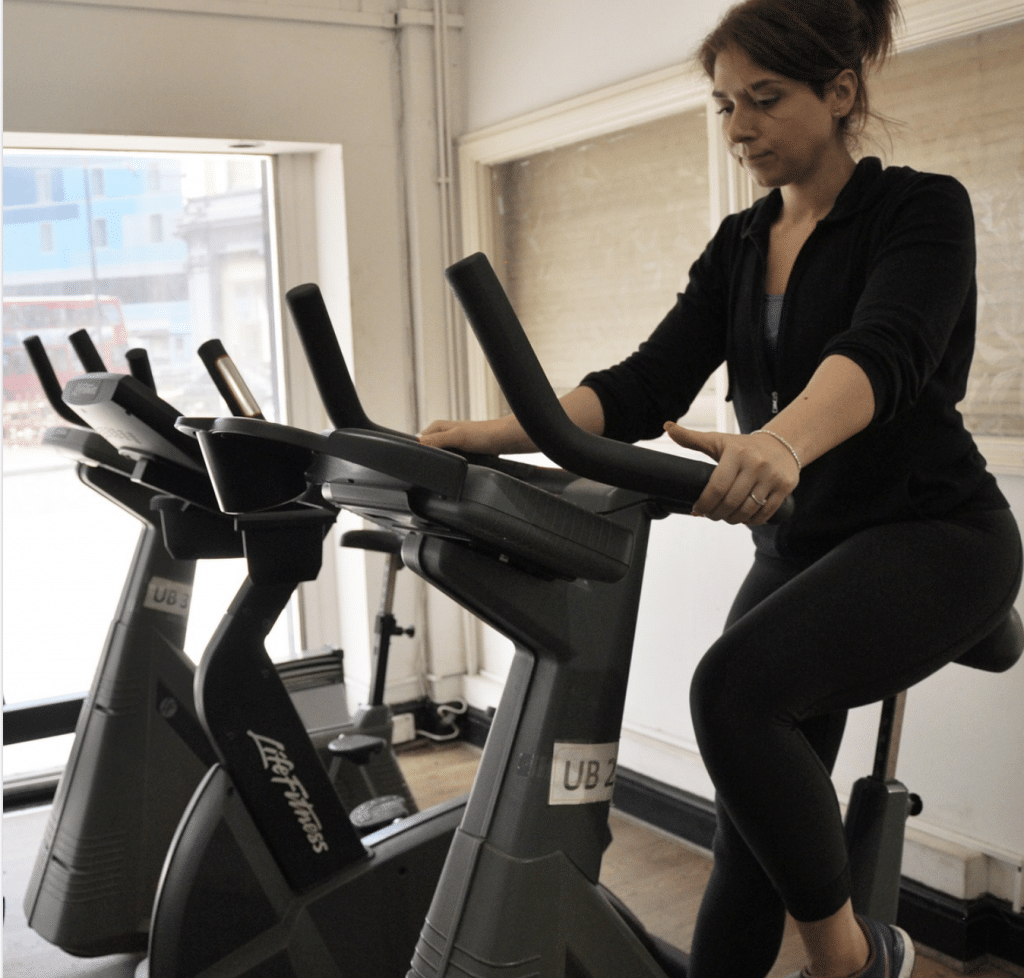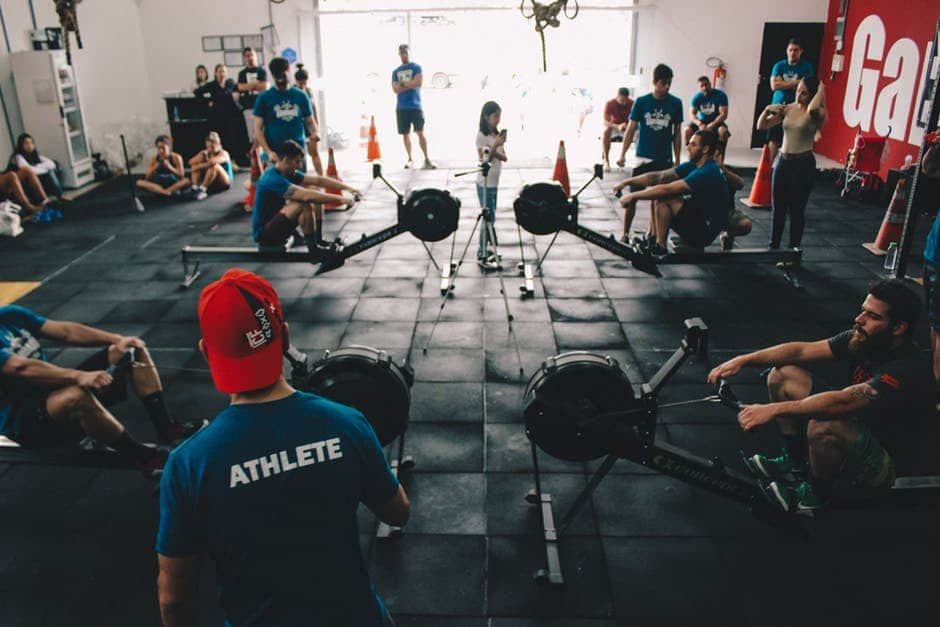Implementing interval training, also known as HIIT (High-Intensity Interval Training), into your workout routine is a great way to add variety. While there are many routines you can incorporate into any fitness routine, adding high intensity interval training will stress cardiorespiratory and neuromuscular systems. This is ideal to challenge intermediate and advanced athletes and fitness enthusiasts. By adding HIIT training into normal weightlifting sets, you can use more muscles, decrease body fat, increase muscle mass, and create a more challenging, interesting workout routine that will keep you engaged in your workouts.
What Is Interval Training?

Interval training is when you alternate periods of moderate- to high-intensity work with periods of either active or passive rest. Unlike circuit training, interval training has less to do with what you’re doing and, instead, is mostly about the intensity of what you’re doing.
What Do You Do?
You could do interval training with one movement like kettlebell swings, several movements like burpees, squat jumps, and lunges, or with a cardio exercise such as running or rowing. You could jog for three minutes, and then push yourself hard for a minute, repeating this cycle for a certain amount of time – generally around 20 total minutes. Alternatively, you could sit on a rowing machine and row quickly for 30 seconds at an elevated rate followed by 30 seconds of rowing at a slower pace, and then repeat the process.
This style of training can carry over to cycling, swimming, rollerblading, and so on. Essentially, you can use it with any form of cardio where you’re able to move at different speeds. High-Intensity Interval Training is the art of varying your speed with a purpose. All that matters is that you’re working at a fast pace for a certain period and resting for a certain period.
What Are the Benefits of Interval Training?

What makes an interval different from just jogging or running/moving at a constant pace? You burn more calories while doing interval training compared to steady cardio. Aside from simply burning more calories, implementing interval training into your workout has many additional benefits to not only your physical health but to your mood and emotional health as well.
Your Heart
Your heart is a muscle and interval training challenges it. If you keep your heart beating at a constant rate, never expanding outside the hearts comfort zone, it will never grow stronger. This is the concept behind “anti-fragile”–by introducing chaos and pushing your muscles outside their comfort zone, they must adapt and grow more resilient, essentially to survive.
If you constantly run or cycle at the same steady pace every day, your heart adapts and learns to become more efficient and thus needs to do less work at that pace. However, when you add interval training, your heart will have to work harder, pump more blood, and work harder to return to normal levels. When your heart rate is constantly changing due to your varied training speeds, it’s becoming more resilient and will be better prepared to handle more chaos in the future.
Weight Loss
This type of training not only burns calories and builds up your oxygen capacity while exercising, but it can also produce an ‘afterburn’ effect that can leave your metabolism operating at a higher level of efficiency for several hours after you’re done exercising. This means you’re burning calories while you’re resting after your training session.
Mood and Emotional Health
Interval training creates a surge of endorphins, the natural opiates your brain produces as a result of difficult exercise. Because of its short bursts of strenuous activity, interval training drastically boosts endorphin production, so you’ll experience a true “runners high” and will feel happy and energized after your workout. And because these workouts are so quick, it doesn’t take much time to reap the benefits of the rush of endorphins. Studies have shown that individuals suffering from depression can greatly benefit from the endorphin rush after an exercise session. With frequent, quick workouts, those suffering from depression can benefit from daily relief from the condition.
Tips to Add Interval Training to Your Workout

Below we have complied a list of five tips to help you with your HIIT workout routine. These are meant to help you create a routine that fits your needs and will give you the best results.
1. Type of Cardio

The big cardio mistake is simply doing too much. It’s best to keep cardio in short, high-intensity bursts. The more a cardio exercise mimics the movement used in muscle-building movements, like the squat or barbell row for instance, the less it hinders strength and muscle growth. One of the important parts of building strength is simply training a movement pattern repetitively. The more you do a movement, the better you get at it. However, if you can’t or don’t like to bike, row, or sprint, don’t be afraid of other forms of cardio such as swimming, jump roping, calisthenics, boxing, and so forth.
2. Length of Workout
One of the benefits of HIIT is you get a lot out of what feels like a little. This is one of the more efficient ways to use cardio to drive fat loss and improve conditioning. However, it can be quite stressful on the body, which means you don’t want to overdo it.
Recommended Workout Length:
- Start your workouts with 2 to 3 minutes of low-intensity warm-up
- Do 20 to 30 minutes of HIIT
- Do 2 to 3 minutes of warm-down
There’s no need to do longer HIIT workouts unless you’re focusing on improving performance not losing fat. If you feel you need more HIIT to lose weight efficiently, your diet may need inspection.
3. The Frequency
The total amount of HIIT you should do per week depends on your immediate goals and what other types of exercise you’re doing. If you’re looking to lose weight quickly, you don’t need to do more than 4 to 7 hours of exercise per week total, and ideally, you’d do more resistance training than cardio in your HIIT.
If your goal is to improve cardiovascular health, then a workout for 30 minutes at least 5 days a week will be enough to get you to your goal.
4. Duration and Intensity of High and Low Intervals
The goal of HIIT is to go fast and hard, not slow and hard. That means that if you’re using a machine like a bike or a rower, you want enough resistance to pedal or pull against but not so much that it becomes a resistance training exercise. The primary difference between high- and low-intensity intervals should be your speed, not the amount of resistance used. You should increase and decrease resistance but not as much as you increase and decrease your speed. The key factor that determines the effectiveness of a HIIT workout is the total minutes spent at a maximum velocity level of exertion.
5. Rest Periods
It is generally recommended that you first work on increasing the length of the high-intensity intervals until they’re in the range of 50 to 60% of your workout. This makes sure you’re doing true HIIT workouts. It’s sensible to work rest periods down to a 1:1 ratio with the high-intensity periods (90 seconds of high-intensity work followed by 90 seconds of rest, for example), and then slowly raise the duration of both the high- and low-intensity intervals, maintaining that 1:1 ratio.
You should also remember that your rest periods should be active recovery where you keep moving rather than coming to a standstill. Studies have shown that active, not passive, recovery is advantageous for reaching maximum velocity during the high-intensity periods and eliciting the adaptive response to the exercise that we’re after.
Conclusion

HIIT is a challenging mode of cardio, but you’ll reap the rewards of a leaner physique faster than with steady-state cardio. Persevering through tough, high-intensity workouts will give you the confidence to tackle other challenges that come your way mentally and physically. You will also benefit from the endorphin rush you’ll earn from such a taxing workout. If you’re a beginner, going all out is not recommended and you won’t like it, but you can easily start with aerobic interval training and work your way up from there.
Even with HIIT, too much is definitely not a good thing. Overkill will prevent you from working at your true maximum capacity during each session, so don’t schedule a HIIT session every day of the week. A better approach is to try HIIT three times per week with another two days of moderate cardio.
HIIT isn’t for everyone. If you’re training for a specific goal or race, you’ll want to follow the appropriate training program—and HIIT may or may not be a part of that plan. Due to the intensity level involved, you should always check in with your doctor before starting HIIT, as with any exercise program. Now you’re ready to get the most out of your next HIIT session. Just remember, if you’re not working your hardest, you’re not doing HIIT.
